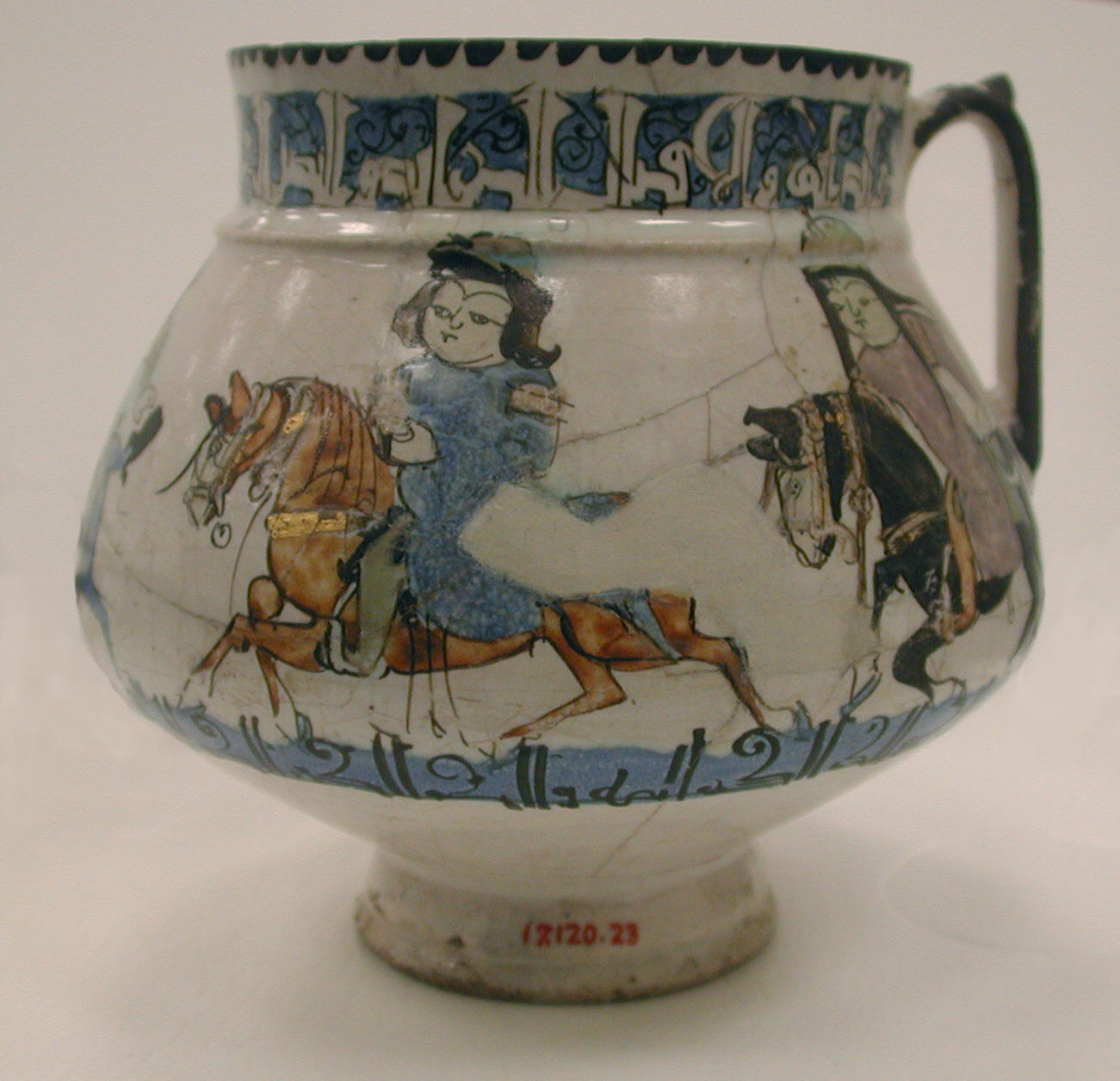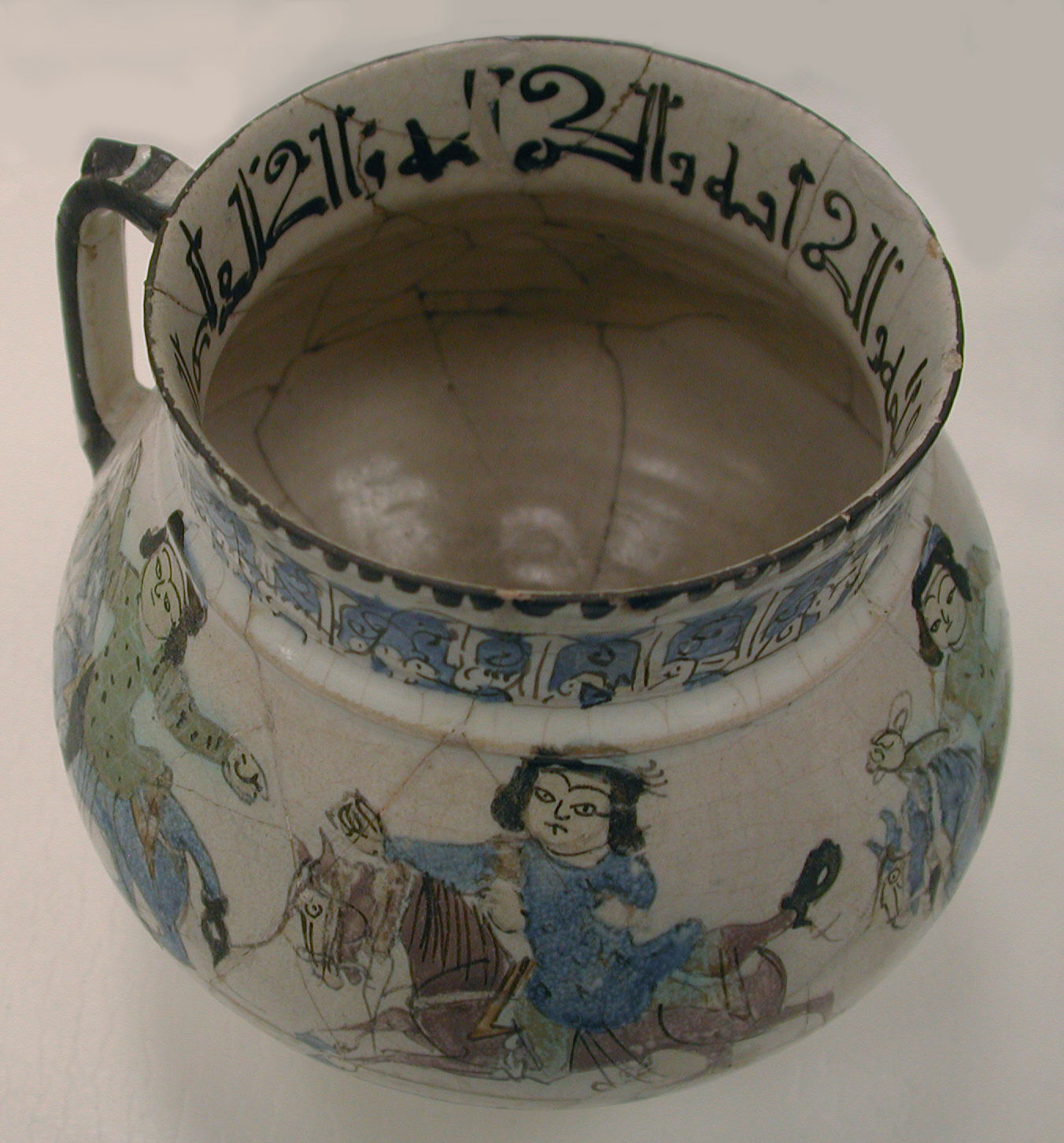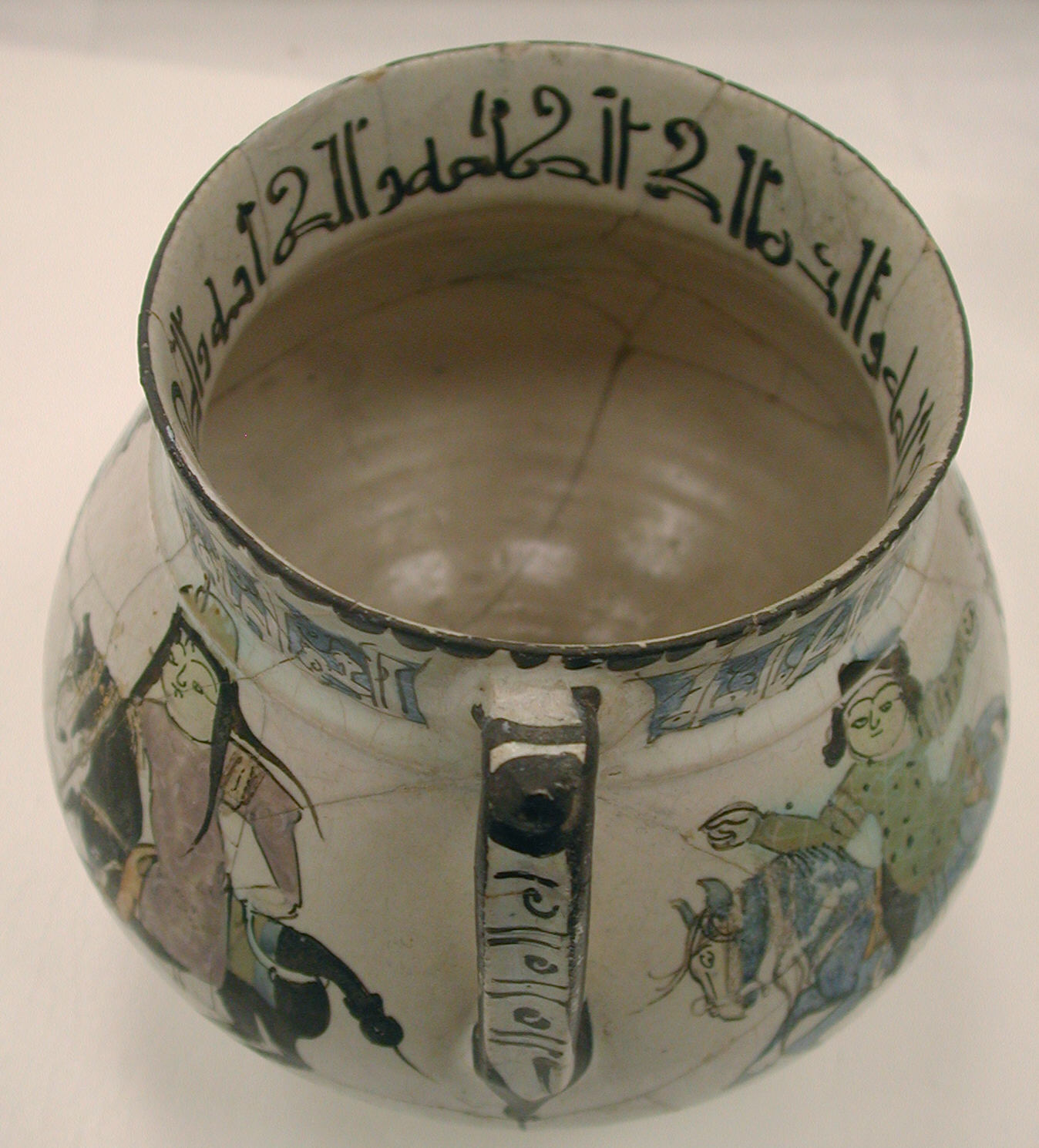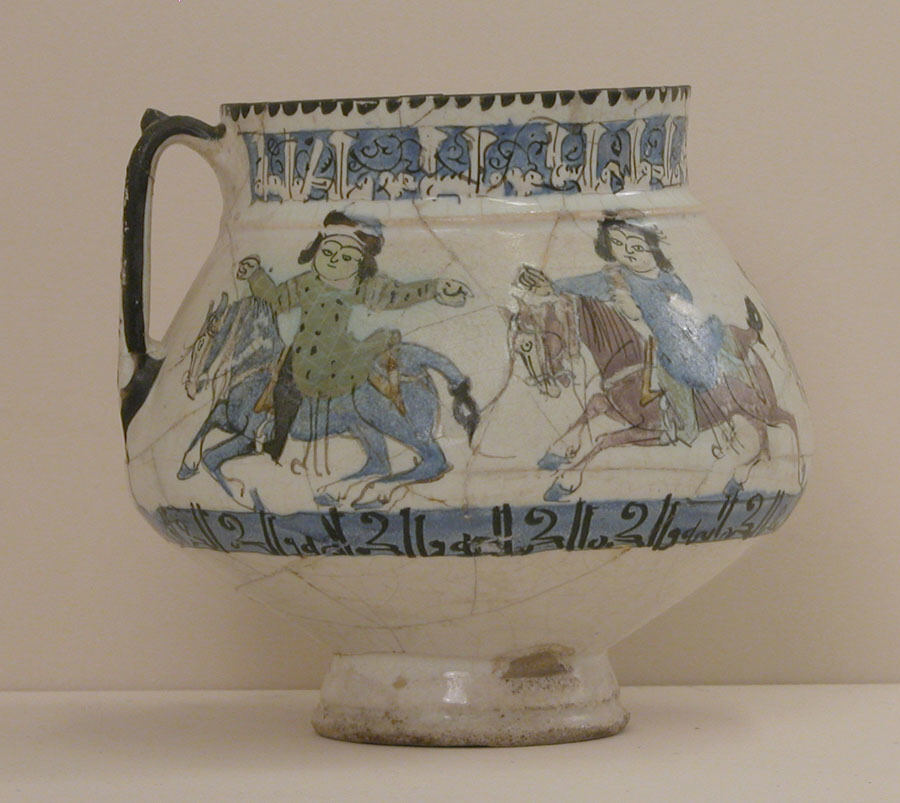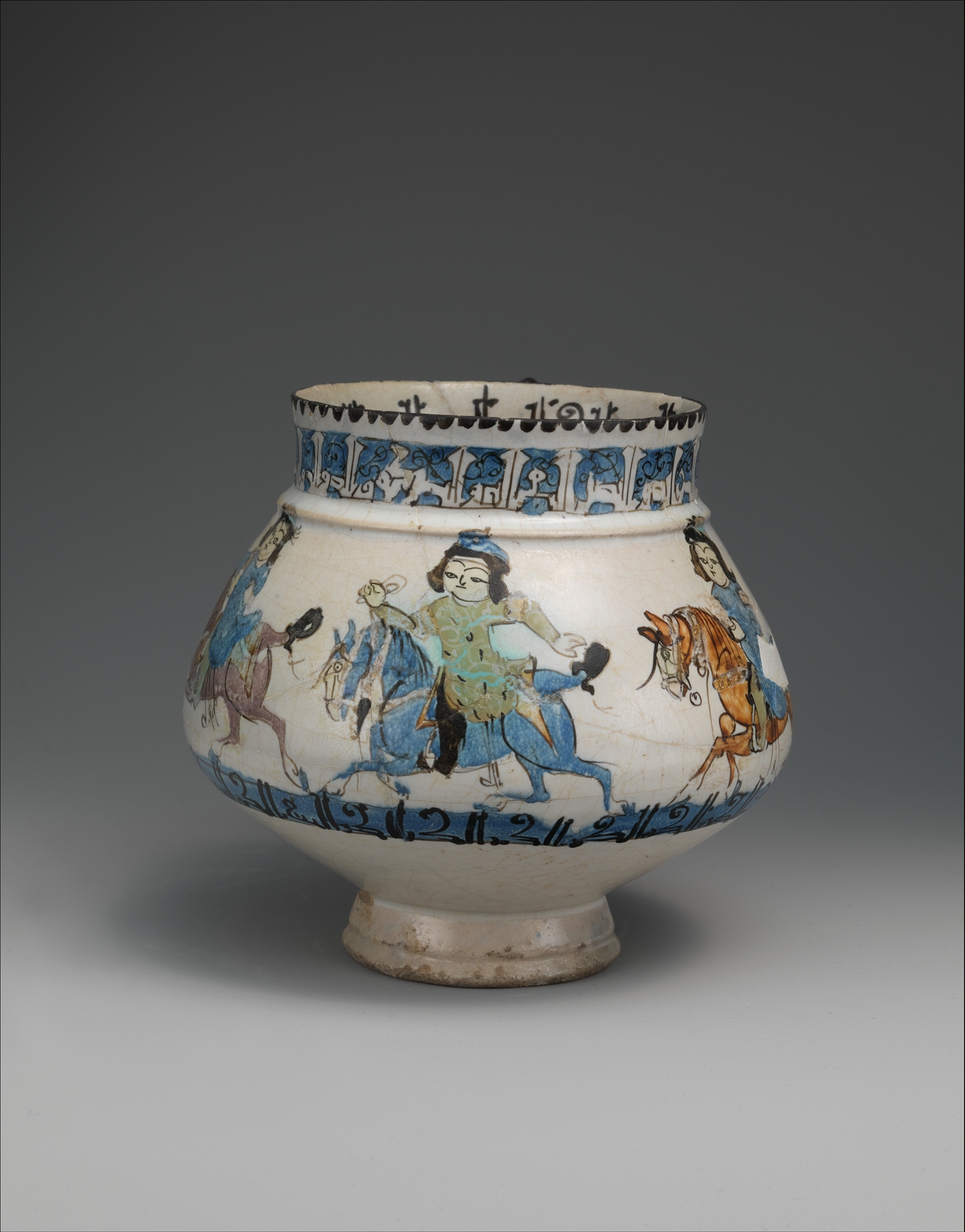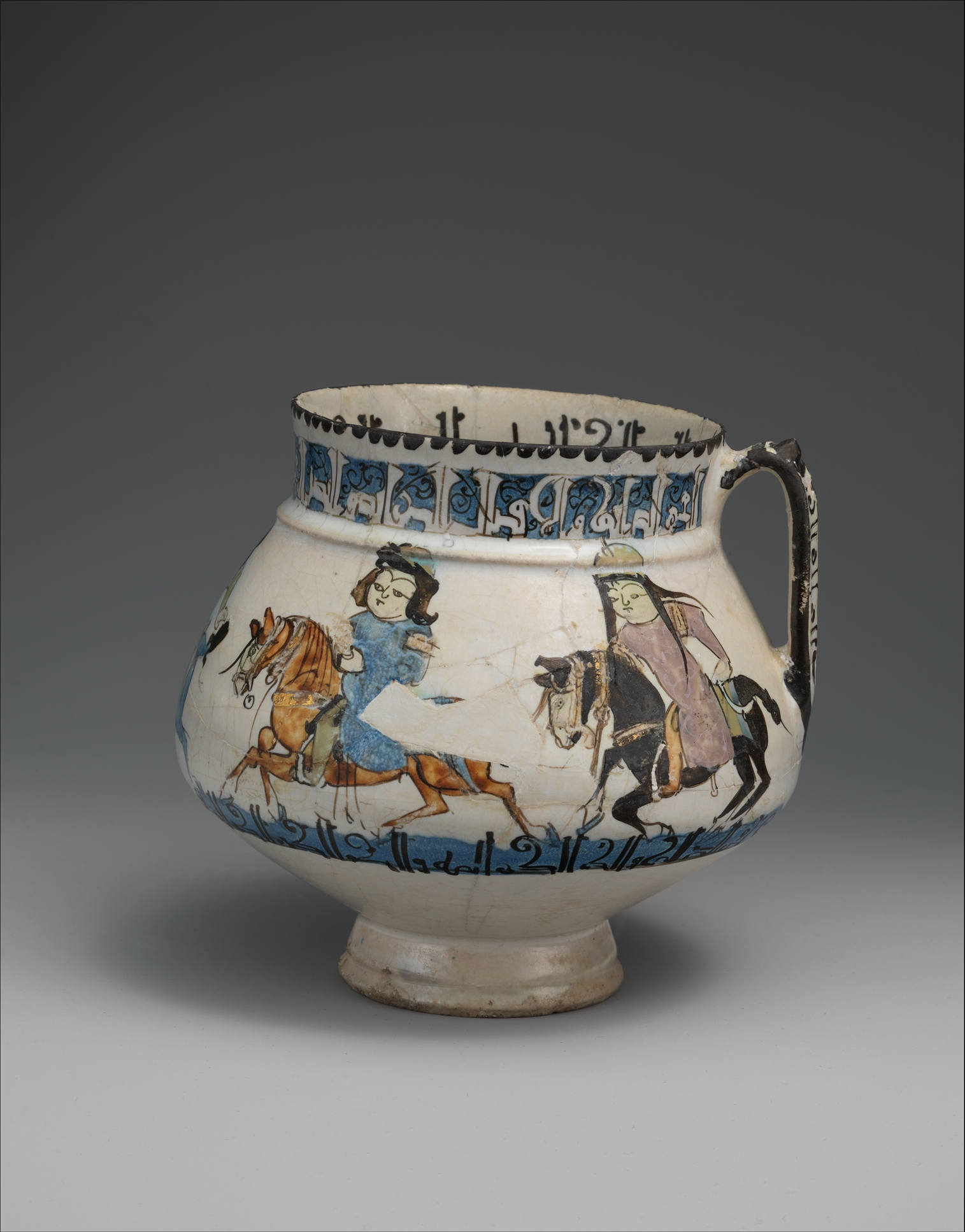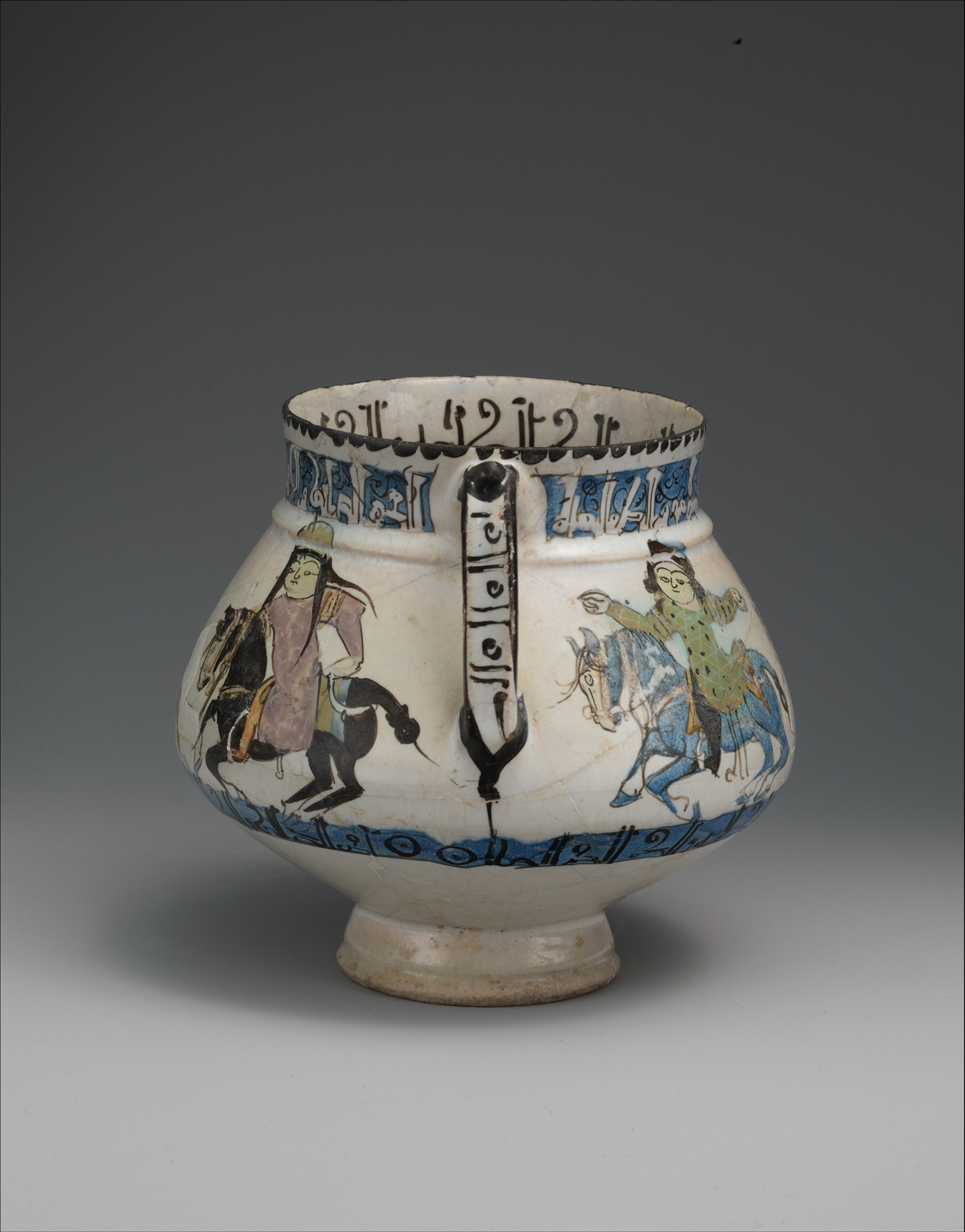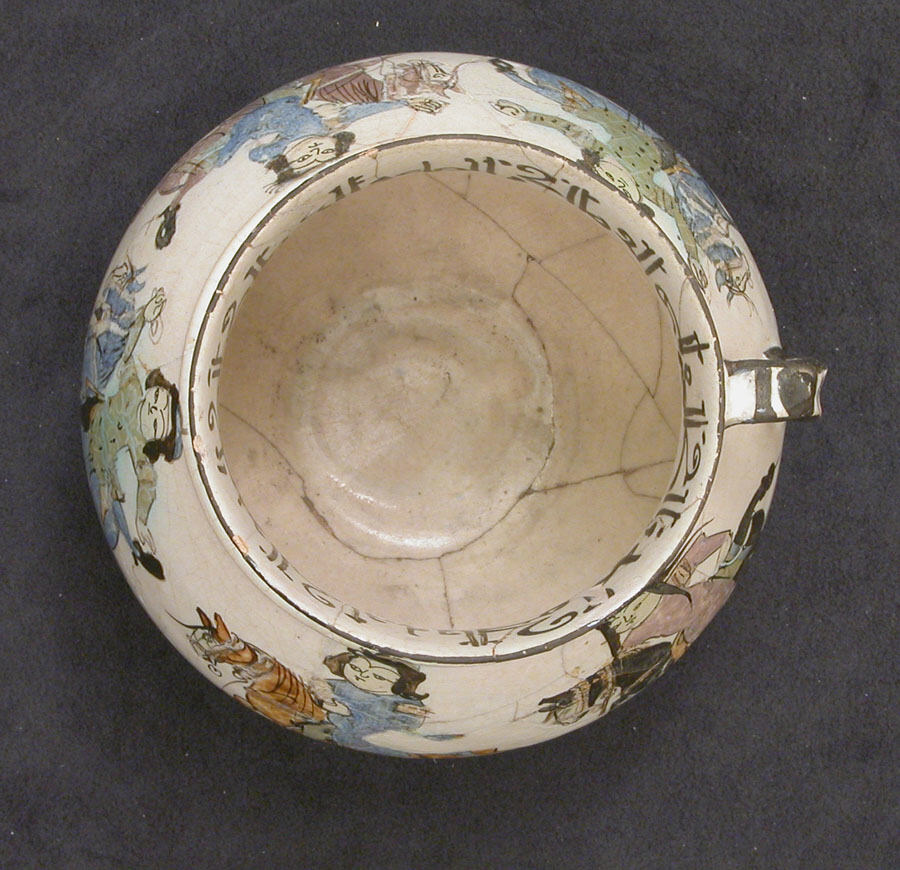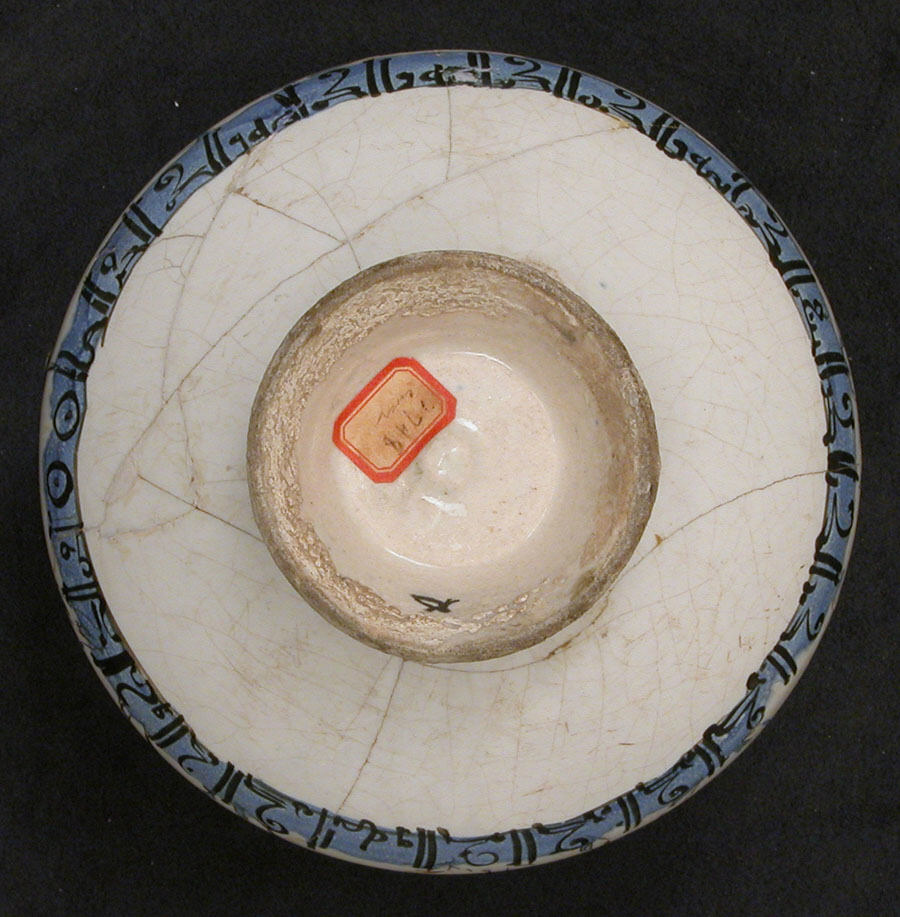Ewer with Horsemen Inscribed in Arabic with Good Wishes to its Owner
Mina’i production, like luster painting, was a labor-intensive process due to the multiple firings required to set its colors. In this technique, colored pigments are applied to an already glazed and fired piece that is returned to the kiln at a temperature just high enough to fix a second layer of pigments without damaging the first glazing. This squat ewer depicts a band of horsemen in procession between two rows of kufic inscription. Men engaged in equestrian sport were associated with the aristocracy in Seljuq art, and the raised arms of these riders may have signified a display of ability on horseback.
Due to rights restrictions, this image cannot be enlarged, viewed at full screen, or downloaded.
This artwork is meant to be viewed from right to left. Scroll left to view more.


